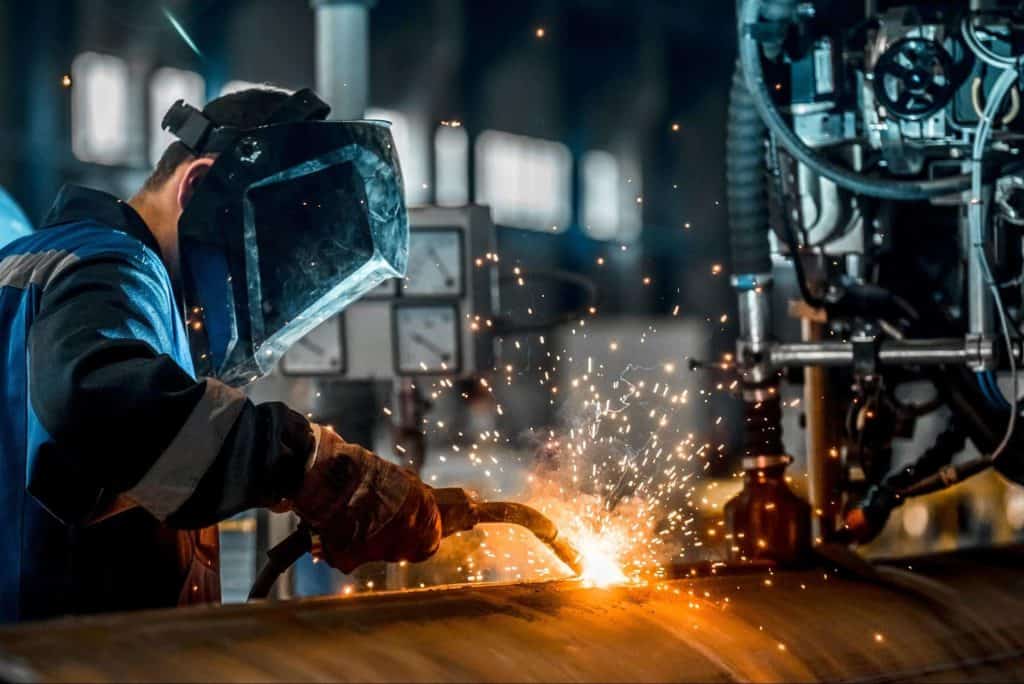A Comprehensive Guide to Comprehending How Welding Evaluation Functions: Strategies, Requirements, and Best Practices for Quality Control in Steel Manufacture
Understanding the details of welding assessment is important for maintaining the honesty of metal fabrication. Applying finest practices can significantly boost high quality assurance steps. The landscape of welding inspection is not without its difficulties.
Significance of Welding Inspection
Although welding is an essential process in various sectors, its stability directly affects the safety and security and performance of frameworks and elements. Reliable welding inspection is crucial for recognizing defects that might compromise the high quality and durability of welded joints. This procedure makes sure adherence to developed standards and requirements, which are vital for keeping architectural integrity and operational integrity.
Welding examination offers several purposes, including validating that the welding process has been implemented properly, assessing the top quality of materials made use of, and verifying that the finished product fulfills governing and market criteria (Houston Welding Inspection). Through extensive inspection, prospective problems such as porosity, cracks, and insufficient blend can be detected early, avoiding pricey repairs and minimizing safety threats
Furthermore, consistent welding assessments foster self-confidence amongst stakeholders, consisting of engineers, clients, and regulatory bodies, by showing a dedication to quality control. The value of welding evaluation can not be overemphasized; it is integral not just for compliance with legal demands but additionally for enhancing the general performance of bonded frameworks. Inevitably, a durable welding inspection program is an aggressive step that safeguards versus failures, guaranteeing the durability and integrity of bonded elements in their designated applications.
Typical Welding Examination Methods
Visual assessment is the very first line of protection, allowing inspectors to recognize surface issues such as fractures, undercuts, or insufficient blend. Radiographic screening uses X-rays or gamma rays to reveal interior imperfections, making it optimal for intricate welds. Ultrasonic testing uses high-frequency acoustic waves to spot subsurface issues, providing precise dimensions of weld honesty.
Magnetic bit screening works for ferromagnetic materials, highlighting surface area and near-surface suspensions when fragments are used to a magnetic area. Conversely, color penetrant testing uses a fluid dye to expose surface-breaking flaws, ensuring that also the smallest problems are spotted.
Each technique has its restrictions and toughness, frequently requiring a mix of techniques for thorough analysis - Houston Welding Inspection. By using these evaluation techniques, quality control in metal construction is accomplished, ensuring that bonded frameworks fulfill safety and efficiency requirements
Sector Standards for Welding


The American Welding Society (AWS) and the American National Criteria Institute (ANSI) are 2 famous companies that develop welding criteria. AWS D1.1, for instance, describes the demands for welding steel frameworks, while AWS D1.2 focuses on light weight aluminum. Globally, the ISO 3834 standard addresses top quality requirements for fusion welding, supplying a structure appropriate across nationwide boundaries.

Ideal Practices for High Quality Guarantee
Quality assurance in welding is paramount to accomplishing risk-free and sturdy constructions. Developing a detailed over at this website high quality management system (QMS) customized to the details welding task is vital.
Normal training and qualification of welding personnel are crucial for keeping a proficient workforce. Constant education and learning on the most recent welding techniques and technologies makes sure that assessors and welders are well-informed concerning existing criteria and practices.
Furthermore, conducting pre-weld examinations to assess materials and equipment can stop defects prior to they happen. Houston Welding Inspection. Throughout the welding process, real-time tracking and documents of welding criteria assist recognize inconsistencies right away. Post-weld inspections must include complete assessments using non-destructive testing (NDT) techniques to guarantee the stability moved here of the welds
Additionally, maintaining clear interaction among staff member advertises a society of high quality. Regular audits and reviews of the welding process aid determine locations for renovation. By sticking to these best methods, companies can accomplish ideal quality control, ultimately bring about improved safety and efficiency in metal manufacture jobs.
Difficulties in Welding Assessment
Although welding examination is crucial for guaranteeing architectural honesty, it provides a selection of challenges that can make complex the evaluation process. One substantial difficulty is the irregularity in welding strategies and materials made use of, which can affect the consistency of weld top quality. Various welders might use differing techniques, leading to disparities that inspectors requirement to identify and review.
One more challenge includes the detection of flaws. Non-destructive testing (NDT) techniques, such as radiographic and ultrasonic testing, can be complex and require experienced professionals to interpret results properly. Incorrect positives or downsides can happen, possibly causing costly rework or endangered safety and security.
Furthermore, the existence of ecological variables, such as temperature level and humidity, can affect the honesty of welds and the performance of evaluation methods. Examiners have to likewise navigate the governing landscape, guaranteeing compliance with market standards, which can differ by jurisdiction and application.
Verdict
In conclusion, welding inspection plays a vital role in ensuring the stability and safety and security of steel manufacture. Using a range of assessment techniques, adhering to established market standards, and executing reliable quality management practices jointly boost the integrity of welded structures. Regardless of the difficulties encountered in the examination process, a commitment to continual improvement and adherence to best techniques can significantly reinforce the quality control structure, promoting greater self-confidence amongst stakeholders in the welding sector.
Reliable welding inspection is essential for determining defects that might jeopardize the top quality and resilience of bonded joints.Moreover, constant welding assessments foster self-confidence amongst stakeholders, consisting of engineers, customers, and regulatory bodies, by showing a commitment to top quality assurance.The American Welding Society (AWS) and the American National Requirement Institute (ANSI) are 2 noticeable organizations that establish welding requirements. During the welding process, real-time surveillance and paperwork of welding criteria help recognize variances quickly. Regardless of the challenges dealt with in the assessment process, a dedication to constant improvement and adherence to best techniques can dramatically strengthen the high quality guarantee structure, cultivating greater self-confidence among stakeholders in the welding market.